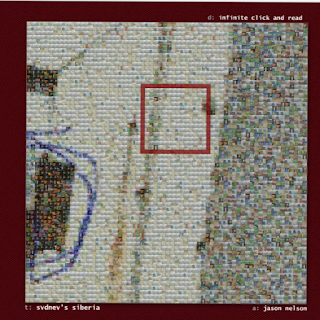E-Lit, Digital Poetry, etc...
With technology advancing every day, developments are constantly being made in all kinds of areas. Many of the arts are being hybridized with these technological advancements, and it has paved the way for a myriad of possibility. Electronic literature is just one intersection of these two realms. The written arts are presented in a more visually captivating, user-interactive format. Looking more deeply at e-lit, one can find e-poetry.
 E-poetry utilizes cutting-edge, digital formats to bring new life and meaning to poems. The technological aspect of it allow for a great diversity in the types of poems, from short, simple visual pieces to touch-interactive haptic poems. We looked at several different e-poems in class, but one that really stood out to me is titled "The Sweet Old Etcetera."
E-poetry utilizes cutting-edge, digital formats to bring new life and meaning to poems. The technological aspect of it allow for a great diversity in the types of poems, from short, simple visual pieces to touch-interactive haptic poems. We looked at several different e-poems in class, but one that really stood out to me is titled "The Sweet Old Etcetera."
It is similar in name to E.E. Cummings's poem "My Sweet Old Etcetera." The reason for this is that this online work is composed of pieces of his writing. The viewer is presented with a bare scene, and by interacting with different parts of it, the scenery grows and changes. By the end, the viewer is presented with a beautiful landscape.
 The style of the different sections mirrors the style of Cummings's poems. The use of parentheses in both leads to cleverly written works, and the whimsical, carefree tone of each evokes a sense of youth. The advantage of the e-poem is that it can utilize motion and sound in a way that classical poetry cannot.
The style of the different sections mirrors the style of Cummings's poems. The use of parentheses in both leads to cleverly written works, and the whimsical, carefree tone of each evokes a sense of youth. The advantage of the e-poem is that it can utilize motion and sound in a way that classical poetry cannot. Various sounds are produced when the reader interacts with the poem. They are similar to guitar chords and evoke a sense of remembrance and calm. Poetry in its classical form is meant to elicit some kind of response from the reader. E-poetry does this as well, but arguably has different ways for doing so. Everything about the image is also just text and color. The landscape is comprised by pieces of text. While a traditional poem could have this element, it could not unfold and progress the way this one does with user interaction.
Everything from the unfolding of the landscape, to the animation of the words, to the soft yet striking music makes this piece a touching, powerful work of art.
Created by: Rachel Heming







